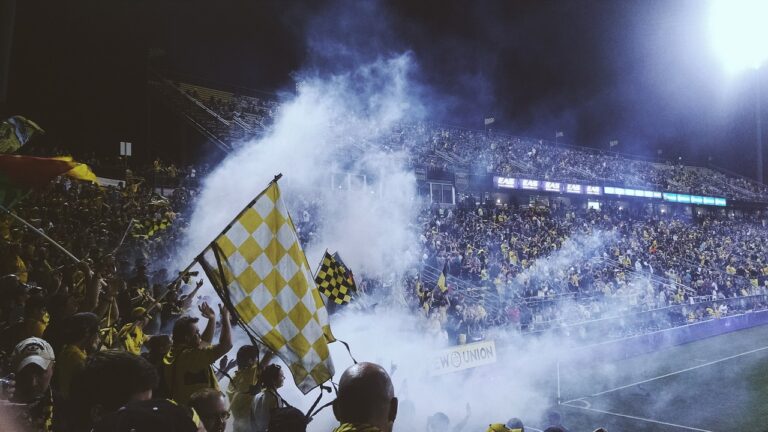Introduction to Football Fan Culture
Football, often called “the beautiful game,” thrives not only because of the players on the pitch but also due to the energy, passion, and dedication of its fans. Fan culture is the heartbeat of football, influencing the atmosphere, spirit, and essence of the game. Whether cheering from the stands or following from afar, fans inject life into every match, transforming it from a simple game to a profound cultural experience that unites millions worldwide.
The Unique Bond Between Fans and Football
For many fans, football is not just a pastime; it’s a lifelong commitment, a source of identity, and a community. Fans wear their team’s colors, memorize its songs, and follow its journey with loyalty that spans generations. This unique bond between fans and football is what gives the game its enduring allure, building a shared history and a sense of belonging for supporters across the globe.
Football as a Global Phenomenon
Football’s appeal transcends borders and languages, making it a universal sport with fans in every corner of the world. Each region brings its own flavor to fandom, with distinctive chants, rituals, and traditions that reflect local cultures. This universality makes football one of the few global experiences that people from diverse backgrounds can share, celebrate, and connect over.
How Fans Drive the Spirit of the Game
Fans are often called the “12th man” for a reason. Their collective energy can influence the momentum of a match, boost player morale, and even intimidate opponents. The fans’ role goes beyond mere spectatorship; they shape the narrative, drama, and excitement of every game, bringing unparalleled intensity to the football experience.
Evolution of Football Fan Culture
Football fan culture has evolved over time, shaped by social changes, technological advances, and the growing commercial landscape of the sport. Understanding its evolution helps us appreciate how fans have become integral to the identity of football.
Early Days of Football Supporters
In the early days, football fans were typically local community members who supported teams that represented their neighborhoods or cities. These early fans attended matches to connect with fellow community members and share in the highs and lows of the game, creating the foundation for the fan culture we see today.
Growth of Organized Fan Groups
As football gained popularity, organized fan groups emerged, often characterized by a strong sense of loyalty and identity. Groups such as the “ultras” in Europe or “barras bravas” in South America began to form, bringing with them dedicated chants, organized displays, and sometimes fierce rivalries. These groups have since become iconic, representing the core values and pride of their respective clubs.
Modern Fan Movements and Digital Influence
Today’s fan culture is heavily influenced by digital platforms. Social media allows fans to connect with their teams and fellow supporters globally, share opinions, and organize campaigns. The digital age has transformed fan culture from a local experience into a global community where fans can engage and unite regardless of distance.
The Role of Fans in Creating Atmosphere
The atmosphere at a football game is unlike any other, and fans play a central role in creating the electrifying energy that fills stadiums.
Stadium Chants and Songs
One of the most distinctive elements of football culture is the chanting and singing that echoes through stadiums. Each club has unique chants and songs that express support, mock rivals, or celebrate a player. These chants create a sense of unity among fans, turning the stadium into a space where emotions are shared collectively.
The Impact of Fans on Team Performance
The presence of fans can have a measurable impact on team performance. Studies have shown that teams often perform better in their home stadiums, bolstered by the support and energy of their fans. This “home advantage” highlights how influential fans can be, acting as a powerful motivator for players.
Stadium Tifos, Flags, and Visual Displays
Fans often go to great lengths to create breathtaking visual displays in stadiums. Tifos—large banners or mosaics displayed by fans—add a dramatic element to games and showcase the creativity and dedication of supporters. These displays make every match feel special, celebrating the identity and history of the club in an unforgettable way.
Global Differences in Fan Culture
Fan culture varies significantly around the world, with different regions bringing unique traditions and styles of support to football.
European Ultras vs. South American Barras Bravas
In Europe, “ultras” are known for their passionate and organized support, with an emphasis on choreographed chants and visual displays. In South America, “barras bravas” take a similar approach but often exhibit even more fervent loyalty, sometimes blending football with political and social movements. Both groups show how fan culture can be an intense, organized, and integral part of the game.
American Supporter Groups and Soccer’s Growing Popularity
In the United States, where soccer is still growing in popularity, fan groups bring their unique style to the sport. Supporter sections in Major League Soccer (MLS) stadiums are known for their colorful displays and chants, adapting elements from global fan culture while adding a distinctly American twist.
How Cultural Differences Shape Fan Traditions
Each culture brings its own customs to football fandom, influenced by local history, values, and socio-political contexts. From Japanese fans cleaning up stadiums after games to English fans’ pub traditions before a match, these practices make football a diverse and vibrant cultural phenomenon.















